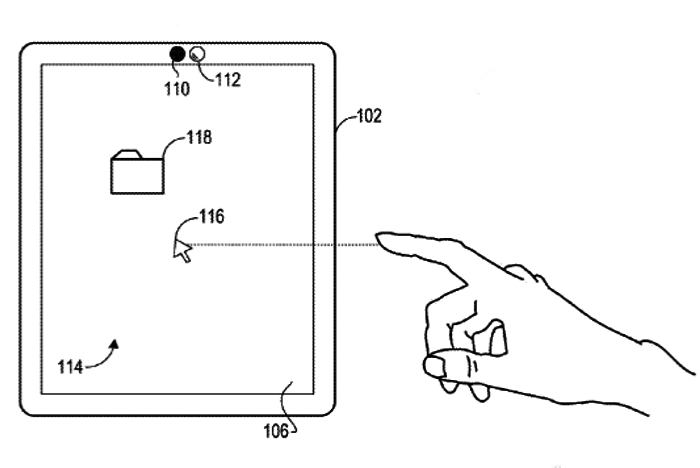
While touchscreens are great for navigating on smartphones and tablets, your greasy fingers leave annoying prints on the surface, blurring the view. Microsoft aims to change that, at least on future Surface devices, by implementing a design that relies on touch-free input. This design appears in a granted patent published by the U.S. Patent and Trademark Office on July 10 simply named as “Touchless input.”
Similar to how Apple’s TrueDepth camera on the iPhone X maps your face to eliminate the need for login credentials, Microsoft’s design would rely on a similar camera that captures a series of depth maps of an entire scene, including a human subject. A detection system built within the device scans each pixel in each map to determine what is static junk and what consists of the device owner.
According to the patent, this process includes “modeling the human subject with a virtual skeleton including a plurality of virtual joints including a virtual hand joint and one or more other virtual joints.” These virtual joints are compared across all captured depth maps to determine a finger gesture based on machine learning. The system can track more than one human user and/or physical objects.

In an example, as the device owner is navigating the user interface, the integrated tracking system is tracking the position of the user’s finger in physical space. The device maps the physical location of the finger to the on-screen cursor. That said, the user can simply move the finger in physical space to move the cursor in the same direction without having to actually touch the screen’s surface.
But the tracking system doesn’t just support simple cursor movements. Given that it can track multiple fingers, users can click and drag files and folders, zoom in and out, pan across the screen, double-tap, rotate, and more. To that extent, Microsoft is emulating mouse functions and physical gestures used on touchscreens and trackpads, only they are performed in the air instead of on a hard surface.
“In embodiments in which the depth camera has sufficient resolution, fingerprints of a human subject may be identified and matched to a user,” the patent states. “In this way, the user can be identified, and cursor control or other computing attributes may be set to preferences associated with the identified user.”
Device configurations may include an additional visible-light camera that may or may not have the same resolution as the depth camera. It would be used to detect the light intensity of a surface using red, green, and blue values, thus adding color to the depth maps to provide more detail. Another configuration would use a “structured light” depth camera that projects a structured infrared illumination.
Microsoft notes that the touch-free control would be integrated into the operating system as a natural user input, joining your typical mouse, keyboard, touchscreen, and game controller. Processing the actual finger gestures via machine vision and/or gesture recognition may be handled on- or off-board, depending on the setup.


